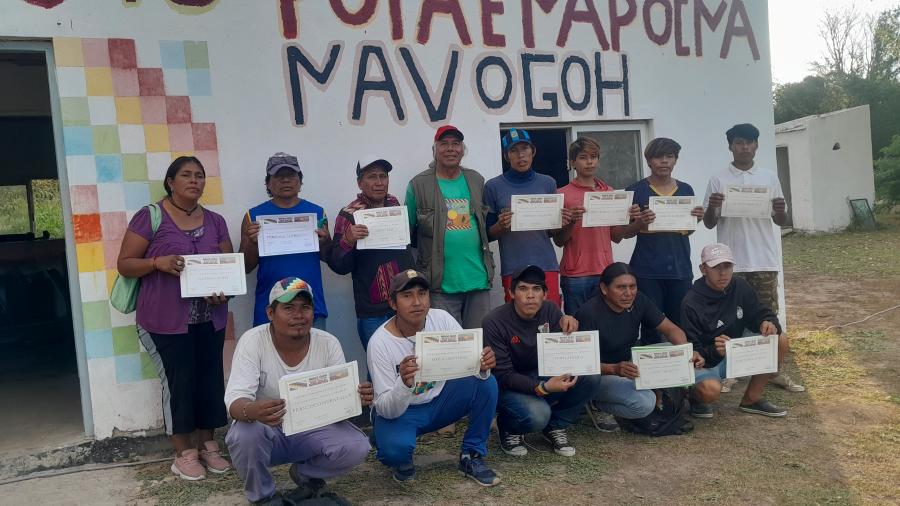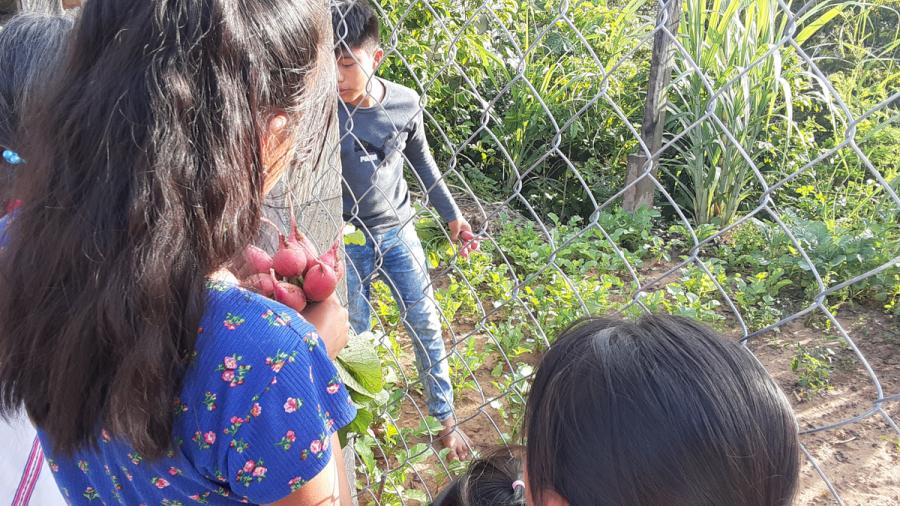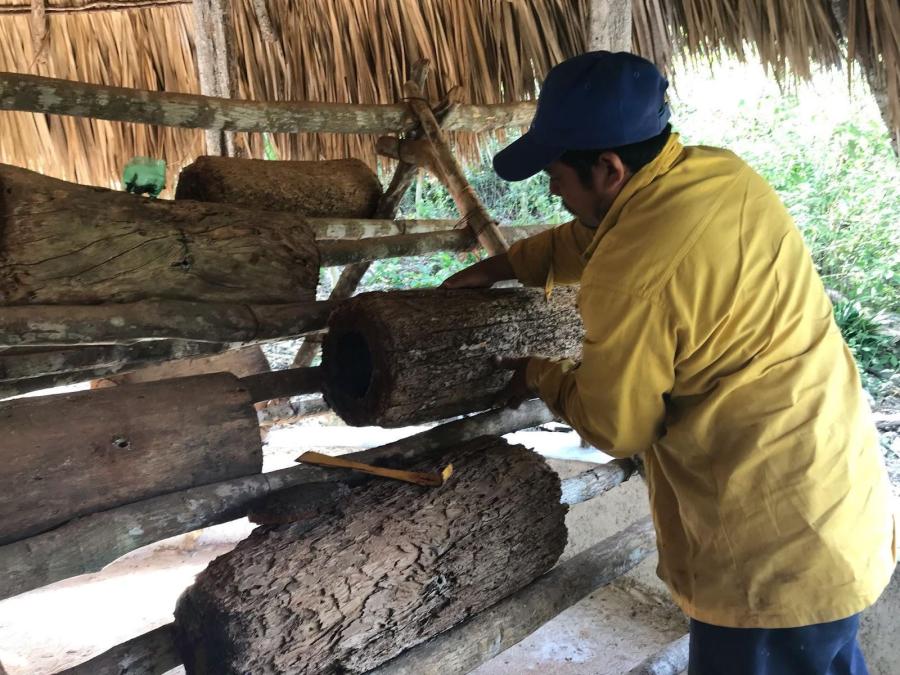The international policy debate on the intellectual property rights of indigenous peoples has advanced from the question of whether indigenous knowledge should be protected to a consideration of how to protect it. Much of the debate arises from issues addressed by different communities, such as:
- Human Rights: The resurgence of self-determination by indigenous groups, particularly their quest for territorial rights.
- Conservation: The increasing loss of biological and cultural diversity and a deepened awareness of their interrelation.
- The UN Convention on Biological Diversity: The commercial use of indigenous knowledge in bioprospecting arrangements.
A legal framework for the protection of indigenous knowledge, however, remains elusive since most provisions for intellectual property law evolved out of a Western view of knowledge as a commodity owned by an individual, not a community.(1)
The following series of articles goes beyond discussion of the inherent importance of indigenous intellectual property rights (IPR). Instead, we asked authors to examine existing legal tools and the programs present in communities and nations worldwide. The essays included in this issue discuss which of these measures have been effective in defining, maintaining and successfully upholding in judicial court systems indigenous claims to land, resources, and intellectual property.
The most problematic aspect of any meaningful discussion of intellectual property rights is that the notion of IPR is, in itself, a Western concept being applied to non-Western societies. Mita Manek and Robert Lettington get to the heart of the matter by describing this irreconcilable difference between Western and (for lack of a better word) non-Western outlooks on the world. Their insights may be the best argument yet for a sui generis legal system to deal with challenges to the cultural, artistic and heritage rights of indigenous peoples.
The assumption that IPR legislation aimed at protecting indigenous persons is necessarily empowering is challenged by the authors contributing to this issue of CSQ. The development of IPR legislation is an important but often inadequate measure: alternative approaches to cultural intellectual property preservation also require evaluation. Successful alternative approaches to help establish and protect indigenous claims to intellectual property may prove as important as legislative or judicial solutions.
Kelly Bannister and Katherine Bennett consider such alternative approaches to protection of traditional knowledge. While it may be controversial to propose that each indigenous group should be allowed exclusive control and management of their own traditional communal knowledge (deciding whether to disclose it to others or allow it to be published), this sort of control is similar to corporate management of knowledge pertaining to product production (trade secrets, for example).
Increased indigenous control over traditional knowledge and its dissemination raises new questions. Rachel Proctor's article on Shipibo curanderos cashing in on the tourism and New Age interest in ayahuasca experiences shows us a side of indigenous peoples that, at first glance, insults Western ideas of "authenticity" in a "traditional" indigenous group. But it also brings out an important question: who is defining what indigenous peoples "should" be? (The impact of tourism on indigenous peoples was covered in CSQ 23:2, 1999.)
Tourism's potential negative impact is also explored in Stephen Snow's article on the Kuna Yala of Panama. The Kuna appear to be a case model for other groups to follow in protecting their cultural heritage -- at least on paper and under the law. Snow explains that the Kuna Statute regulating tourism is, in itself, inadequate; active enforcement of the law and vigilance to ensure the protection of indigenous heritage and knowledge are essential. This is a tall order, especially when many impoverished indigenous peoples face a daily struggle to feed and support their families. The Kuna Statute on Tourism may be the beginning of a successful program to protect indigenous cultural heritage rights.
Mary Riley (in an article on traditional medicine in Laos) outlines the process of ethically-informed drug discovery. She discusses the ICBG (International Cooperative Biodiversity Group) models of research, community development/improvement and benefitsharing with indigenous groups. While the mere presence of an outside group with money to give to some communities and not to others can be a problem, the encompassing challenge of how to give indigenous groups a more equal footing with national governments, bioprospecting groups, and mainstream interests may have some solutions.
Too often, criticisms of bioprospecting come from those never involved in the process and unaware of the tools that can work. Lessons from bioprospecting over the past decade are documented by Katy Moran. Citing UN Convention on Biological Diversity (CBD) requirements for bioprospectors, Moran suggests that enforcement at all levels of government and inclusion of all participants can make bioprospecting a rewarding process.
In an article by Tressa Berman, Peter Seitel and Anthony McCann, the assessment of guidelines for the protection of folklore and folkloric expression points to the difficulty of protecting this unique set of expressive culture. Folklore (and folkloric expression) as a kind of cultural commodity falls outside the standard in defining intellectual property. But because folklore can also be misappropriated and treated like a commodity for commercial gain, legislative systems designed to protect it must be evaluated even though folklore is considered part of the public domain and -- unlike material culture -- is not often construed as property.
In a similar vein, Luisa Maffi's article on preserving native languages in Mexico is important because language is so rarely considered intellectual property. Maffi points out that the way in which people use and generate language does encode their worldview as well as indigenous concepts and knowledge that have no linguistic counterparts in other languages. When the language used to encode a specific indigenous concept dies out, indigenous knowledge itself is lost.
Other forms of expressive culture, such as indigenous art forms, also become commodities when taken outside of the traditional cultural context and put up for sale on the market. Adrienne Hoard demonstrates the chasm between art as commodity (to outsiders) and art within its cultural context (to the Ndebele people of South Africa). When Ndebele art becomes another object to collect, or when non-Ndebele produce Ndebele forms of art, is this misappropriation?
Bartholomew Dean's article on Andean traditional music and the risk of misappropriation also strikes a familiar chord in this age of the Napster court case and the widespread problem of bootleg cassette tapes and CDs. If even wealthy record labels have trouble protecting their music from copyright infringement, local vigilance by grassroots organizations will clearly be more effective for the protection of traditional music than the mere existence of statutes on copyright.
Another possible tool for the protection of indigenous intellectual property in all forms may be the enforcement of treaties and legal precedents currently on record but largely ignored by the court system. Lawyers Maui Solomon and Leo Watson evaluate the utility of the Waitangi Tribunal in recognizing and asserting the rights of M...ori and Moriori peoples of New Zealand to control over their own cultural heritage, including indigenous art, symbols and designs, lands, languages, and indigenous knowledge as it pertains to plant and animal resources. Solomon and Watson note that the judicialization of the Waitangi Tribunal has, in some respects, made it a more Westernized legal instrument.
David Stephenson and Wayne Shammel, also attorneys, look at the legal case of the Cow Creek against a motorcycle manufacturer using Native American symbolism that wrongly suggests a connection with American Indians. This is a more classic case involving intellectual property, as it could be described as trademark infringement, which is easily understood within the Western IPR framework. Stephenson and Shammel propose that other types of law (international law, human rights law) team up with IPR law to better serve the prosecution of such cases.
Julie Hollowell-Zimmer's article on the use of the Silver Hand trademark among the Native Peoples in Alaska also discusses the possibilities and limitations of Western IPR frameworks for protecting indigenous arts. She explains how the Silver Hand trademark is actually used, how imitations pop up, and how market expectations -- including consumers who expect Native American arts and crafts to be cheap -- thwart sales and artisans more than would any open attempt to block the protection of their authentic arts.
Because indigenous groups are often unprotected under systems of property ownership by individuals, IPR frameworks built on the community-based reality of indigenous groups may be the only ones that "work" for indigenous peoples. Will the implementation of such frameworks further marginalize indigenous peoples, even within Western court systems? Will others accuse indigenous peoples of having special rights under the law? Maybe. But WIPO, UNESCO, UN and other international bodies do recognize the special situation of indigenous peoples when it comes to intellectual property rights.
A few themes are common to these articles. Perhaps the most important is that legislation is not the ultimate goal or solution to the issue of indigenous intellectual property rights. If giant, moneyed corporations fight one another every day over trademark and copyright infringement, how can we expect to be any less vigilant among smaller groups of already marginalized people?
(1). The closest thing to community ownership is the corporate ownership of a patent.
Article copyright Cultural Survival, Inc.



